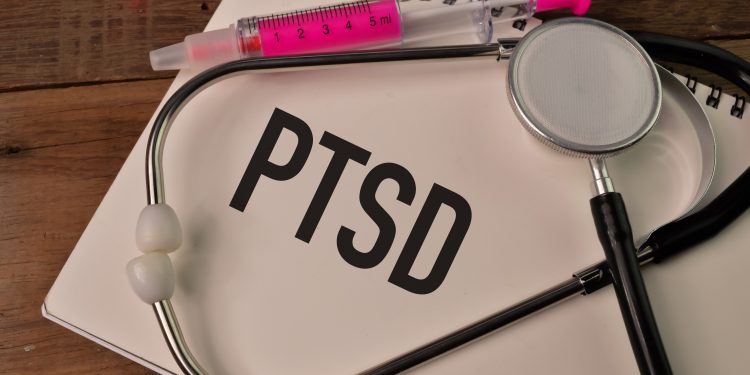Post-Traumatic Stress Disorder (PTSD) is a mental health condition that can develop after a person experiences or witnesses a traumatic event. Combat, sexual or physical assault, a serious accident, or natural disaster are examples of traumatic occurrences. The condition can persist for months or even years, with triggers causing strong emotional and physical reactions as well as recollections of the event. Long after the horrific incident has passed, people with PTSD continue to endure intense, unsettling thoughts and sensations related to their experience. Flashbacks or dreams may cause them to relive the incident, they may experience sadness, fear, or rage, and they may feel distant or estranged from other people. A loud noise or an unintentional touch can trigger significant negative reactions in those with PTSD, who may avoid circumstances or people who remind them of the traumatic occurrence.
Causes of Post-Traumatic Stress Disorder
Among the frequent causes of PTSD are:
- Experience in combat or the military
- Sexual or physical assault
- Serious accidents like vehicle crashes
- Natural catastrophes like hurricanes or earthquakes
- Exposure to acts of mass violence like bombings or mass shootings
- Childhood maltreatment or neglect
Symptoms of Post-Traumatic Stress Disorder
Four categories can be used to group PTSD symptoms:
- Relieving the traumatic event
This can take the form of flashbacks, nightmares, or upsetting memories. Flashbacks can happen suddenly and can be brought on by certain sounds, odors, or other sensory clues that bring back the painful memory. They can be so vivid that the sufferer could believe they are going through the horrific incident once more. Nightmares can make it difficult for PTSD sufferers to get a good night’s sleep.
- Avoidance
Persons who have PTSD may try to avoid situations that remind them of a traumatic incident, such as locations or people connected to it, or they may want to avoid talking about it. Some people could also refrain from getting assistance or discussing the tragedy with others. It can also result in additional issues like loneliness, difficulties sustaining relationships, and difficulty going about everyday activities.
- Negative alterations in mood and cognition
These include having mistaken ideas about oneself or the world, having trouble experiencing good emotions, and feeling distant or estranged from others. There are several examples of this, and they include:
- Negative shifts in one’s sense of oneself: Those who suffer from PTSD may have false beliefs about who they are, such as guilt, shame, or responsibility for the traumatic incident. They could also have a sensation of isolation or alienation from others.
- Negative shifts in perspective: People with PTSD may perceive the world as unpredictable and hazardous and may find it difficult to trust others. They could also struggle to experience joy or find good in situations.
- Intrusive thoughts: Those who have PTSD may have uncomfortable and unwanted memories, thoughts, or visions of the traumatic incident.
- Increased arousal and reactivity
This includes the following:
- Hyperarousal: PTSD sufferers may be on high alert all the time and feel frightened or anxious quickly.
- Hyperactivity: PTSD sufferers may experience agitation or restlessness and may find it difficult to remain still or unwind.
- Exaggerated startle response: People with PTSD may have an overactive startle response, making them more susceptible to being startled or alarmed by sudden or loud stimuli.
- Insomnia: PTSD sufferers may have problems falling asleep, or they may have nightmares or night sweats.
- Anger or irritability: They may find it difficult to manage their anger and may feel quickly enraged or impatient.
.
Complications of PTSD
If post-traumatic stress disorder (PTSD) is not treated, it can result in a number of consequences. Potential PTSD complications include some of the following:
- Physical health issues: Individuals with PTSD may be more susceptible to physical issues like heart disease, diabetes, and chronic pain.
- Substance abuse: To cope with their symptoms, people with PTSD may turn to drugs or alcohol. This can result in addiction and other problems with substance misuse.
- Suicidal thoughts and behavior: People with PTSD may have suicidal thoughts and may be more likely to attempt suicide.
- Depression: PTSD frequently coexists with depression, which makes it more challenging to manage the symptoms of PTSD.
Treatment or Management of PTSD
There are numerous therapies available to treat post-traumatic stress disorder (PTSD). The most successful treatment strategies frequently include therapy and medicine. Typical forms of treatment include:
- Cognitive-behavioral therapy (CBT):
CBT is a form of talk therapy that aids PTSD sufferers in comprehending and altering the ideas and behaviors that contribute to their symptoms. It can assist people in learning coping mechanisms and abilities to control symptoms. It also includes relaxation techniques, exposure therapy, and cognitive restructuring.
- Eye Movement Desensitization and Reprocessing (EMDR):
EMDR is a type of therapy in which the patient recalls the traumatic experience while receiving bilateral stimulation in the form of eye movements or other means. This can aid in processing the painful memory’s emotional distress and lessen it.
- Medication:
Drugs that treat sadness and anxiety, as well as some PTSD symptoms like depression and sleep problems can assist e.g., sertraline, paroxetine, and fluoxetine.
- Support groups:
These settings can help persons with PTSD talk about their experiences and gain knowledge from others who have been through similar situations.
- Adapting your lifestyle:
Mindfulness practices like yoga, meditation, and others might help you feel less stressed and anxious. A nutritious diet, regular exercise, and decent sleep habits can all help to enhance general wellbeing and lessen PTSD symptoms.
Conclusion
Regardless of age, gender, or origin, PTSD can affect anyone. We have to understand that not everyone who goes through a terrible event will acquire PTSD. The symptoms may not show up right away after the traumatic experience and can differ from person to person
It’s crucial to collaborate with a mental health expert to create a customized treatment program that caters to the needs of the PTSD sufferer. It may take some time and include several steps, but with the right assistance and care, it is feasible to manage PTSD symptoms and enhance general quality of life.










Discussion about this post